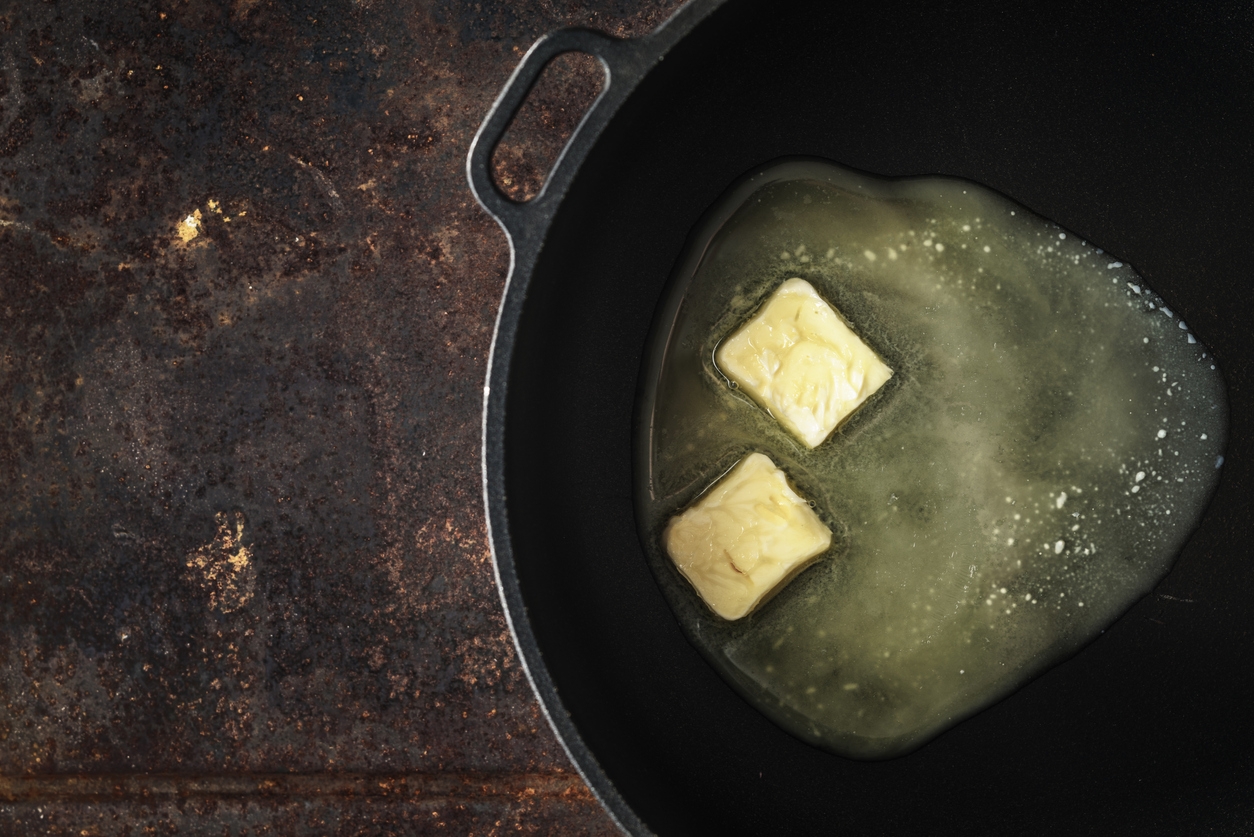Oil and butter sometimes have different uses in baking and cooking. Or you might have a preference for one over the other. So it's helpful to know how to make a butter-to-oil or oil-to-butter conversion in recipes.

The Role of Fat in Baking
Fat, such as oil or butter, plays an important role in baking and cooking, providing flavor, texture, structure, and moisture.
1. Fat adds flavor and moisture to baked goods.
2. It helps create a soft, tender texture in cakes, muffins, and other baked treats.
3. It increases the shelf life of baked products by slowing down staling.
4. Fat reduces gluten development during mixing which prevents a tough, dry result when baking with wheat flour.
5. It also aerates doughs and batters which makes them lighter, airier, and more flavorful while allowing them to hold their shape better during baking.
6. Fat helps browning of the surface of the product which gives it an appetizing look and taste.
7. Finally, fat can act as an emulsifier to help keep the ingredients in a mixture evenly distributed and suspended. This prevents separation of sugar, liquids, or fats during baking.
Oil Vs. Butter in Baking
Cooking with oil and butter both provide fat to a recipe, but the two ingredients offer different flavor profiles and textural qualities that make them ideal for different baking applications. Understanding their differences can help ensure your baking creations turn out perfect every time.
- Texture
Oil is a liquid fat because it is liquid at room temperature. Butter is a solid fat because it is solid at room temperature. Oil won't provide as much leavening as butter, so oil will produce a denser texture.
- Taste
Butter will provide a more buttery taste, while oil won't provide as much extra flavor. You may want the buttery flavor, or you may prefer the more neutral flavor of oil to allow the other flavors in the recipe to shine.
- Moisture
Oil is better at keeping baked goods moist than butter, making it ideal for cakes and quick breads that you want to stay fresh and moist for several days.
Converting Between Oil and Butter
Oil or butter can be swapped for one another in a recipe without needing to adjust the oil-to-butter conversion ratio. For instance, oil can sometimes be used as a direct replacement for melted butter and vice versa in recipes.
But if the butter in your recipe is not melted, the conversion ratio between oil and butter is 3:4. So for every 3 parts of oil, you use 4 parts of butter. You can convert from oil to butter or butter to oil by multiplying or dividing by 0.75.
Butter to oil
To convert butter to oil, you multiply the amount of butter by 0.75.
Amount of oil = Amount of butter × 0.75
For example, if you want to know how much oil to use in place of 3 tablespoons of butter, you multiply 0.75 by 3.
Amount of oil = Amount of butter × 0.75
Amount of oil = 3 × 0.75
Amount of oil = 2 ¼ tablespoons
So, you can substitute 2 ¼ tablespoons of oil for 3 tablespoons of butter.
Oil to butter
To convert oil to butter, you divide the amount of oil by 0.75.
Amount of butter = Amount of oil ÷ 0.75
For example, if you want to know how many butter to use in place of ¾ cup of oil, you divide ¾ cup by 0.75.
Amount of butter = Amount of oil ÷ 0.75
Amount of butter = ¾ ÷ 0.75
Amount of butter = 1
So, you can substitute 1 cup of butter for ¾ cup of oil.
Oil to Butter Conversion Table
| Amount of Oil | Amount of Butter |
| ¾ Tbsp | 1 Tbsp |
| 1 Tbsp | 1 ⅓ Tbsp |
| 3 Tbsp | ¼ cup |
| ¼ cup | ⅓ cup |
| ½ cup | ⅔ cup |
| ¾ cup | 1 cup |
| 1 cup | 1 ⅓ cup |
Bottom Line
Oil and butter both provide fat to a recipe, but they offer different tastes and textures to the food. If you want to substitute one fat for the other in a recipe, the oil to butter conversion ratio is 3:4.


